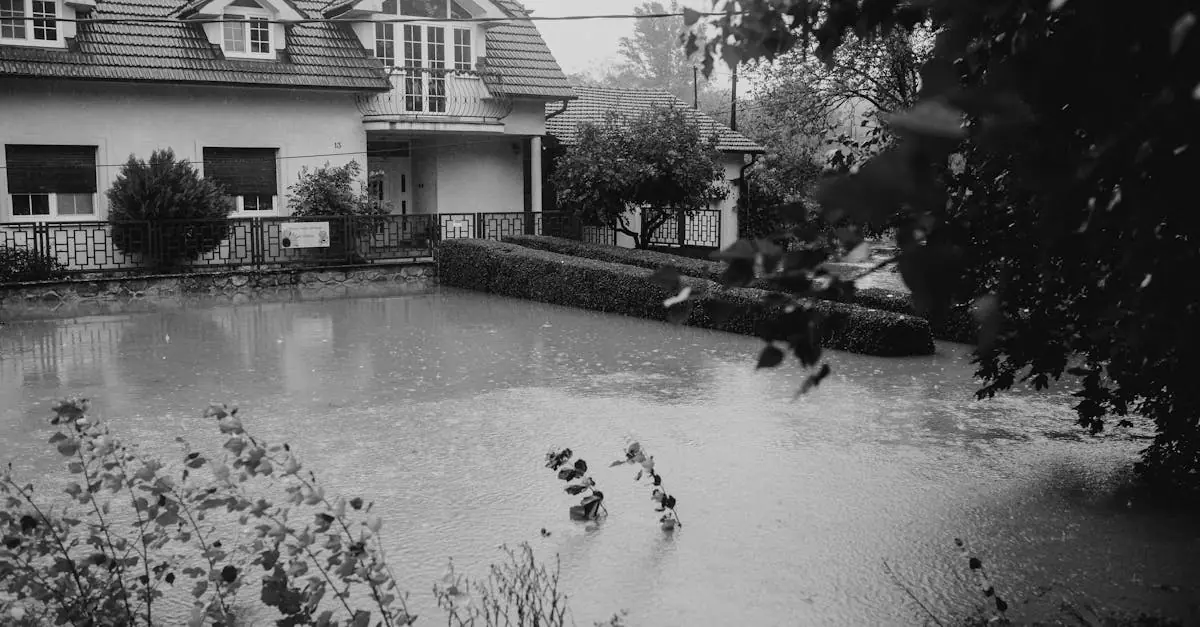Table of Contents
ToggleTermites are like the ninjas of the pest world—silent, sneaky, and capable of wreaking havoc before you even notice they’re there. Homeowners often find themselves asking a crucial question: will homeowners insurance cover termite damage? After all, no one wants to discover their dream home has turned into a buffet for these wood-munching villains.
While the thought of tiny insects munching away at your home can be unsettling, the answer isn’t as straightforward as one might hope. Many policies have a “no termite coverage” clause that makes homeowners feel like they’ve been duped. But fear not! With the right knowledge and a little detective work, homeowners can navigate this tricky terrain and protect their investment. So let’s dive in and uncover the truth about termite damage and insurance coverage.
Understanding Homeowners Insurance
Homeowners insurance offers vital protection for property owners against various risks. Many individuals rely on this coverage to safeguard their homes and belongings from unexpected events.
What Is Homeowners Insurance?
Homeowners insurance represents a policy designed to protect against damages to a home and its contents. This coverage typically includes protection from fire, theft, and certain natural disasters. Policies vary in terms of what they specifically cover. Often, standard policies exclude specific damage types, including termite damage. Homeowners should review their policies closely to understand the extent of their coverage.
How Does It Work?
Homeowners insurance operates through premiums paid by the property owner. It provides financial assistance for repairs or replacements resulting from covered incidents. Claim processes involve submitting documentation and evidence of damages which an insurer reviews. The insurance company then determines the compensation amount. Understanding how claims work helps homeowners take advantage of coverage. Each policy may have its own requirements, making it important to familiarize oneself with the specific terms.
Termite Damage Explained
Termite damage represents a significant concern for homeowners. These insects silently compromise structures, leading to costly repairs if left unchecked.
How Termites Damage Your Home
Termites weaken wooden structures by feeding on cellulose. They create tunnels within beams, walls, and floors, compromising the integrity of the home. Advanced infestations can cause substantial damage in a short period. For instance, a mature colony can consume up to 13 ounces of wood daily. Repairs may require extensive renovations, including replacing beams and flooring.
Common Signs of Termite Infestation
Identifying termite infestations early prevents further damage. Common signs include discarded wings near windows or doors and mud tubes along foundation walls. Homeowners often notice hollow-sounding wood when tapped. Other indicators can include small holes in drywall and frass, resembling wood shavings. To minimize potential losses, timely inspections and treatments are crucial for effective management.
Coverage for Termite Damage
Homeowners insurance provides important financial protection, but it often excludes coverage for termite damage. Understanding how typical homeowners insurance policies operate is essential for homeowners.
Typical Homeowners Insurance Policies
Most standard homeowners insurance policies cover perils like fire, theft, and natural disasters. Coverage often includes the structure of the home and personal property. However, termite damage rarely fits into these categories, which creates a gap in protection for homeowners. Many insurance companies specify within the policy that termite damage is not insured, which can lead to unexpected repair costs. Knowledge of specific policy terms helps homeowners make informed decisions regarding their coverage options.
Exclusions in Homeowners Insurance
Exclusions in homeowners insurance often leave homeowners unprotected against termite-related issues. Termite damage typically falls under the category of maintenance problems rather than sudden incidents. Most policies clearly state that pest infestations, including termites, are excluded from coverage. Homeowners may find that this limitation creates challenges when addressing infestations and required repairs. Reviewing policy documents closely and consulting with an insurance professional can shed light on coverage limitations and help homeowners navigate their options more effectively.
Situations Where Coverage May Apply
Certain circumstances allow for potential coverage of termite damage under homeowners insurance. Understanding these situations helps homeowners make informed decisions regarding their policies.
Prevention and Treatment Coverage
Some homeowners insurance policies may cover expenses related to prevention and treatment of termite infestations. For example, if a homeowner hires a pest control service to treat an existing infestation, the policy might provide partial reimbursement. Regular inspection costs may also be covered if they prevent damage from occurring. Coverage in this context typically falls under specific maintenance-related clauses, which can vary significantly by provider. Homeowners should examine their policies closely to determine if such provisions apply.
Additional Endorsements or Riders
Homeowners can consider additional endorsements or riders to enhance their coverage for termite damage. A rider specifically addressing termite protection can close the gaps often left by standard policies. Such endorsements often include benefits like coverage for repairs resulting from termite damage, making them a valuable option. Homeowners might incur extra costs for these riders, but they offer greater peace of mind. It’s advisable for policyholders to consult their insurance agents to explore customizable options that cater to their unique needs.
Homeowners must remain vigilant about the limitations of their insurance policies regarding termite damage. Understanding that most standard policies exclude this type of damage is crucial for effective home protection. By taking proactive steps such as regular inspections and considering endorsements, homeowners can enhance their coverage and safeguard their investments. Consulting with insurance professionals can provide clarity and help navigate the complexities of coverage options. Ultimately, staying informed and prepared can make all the difference in protecting a home from the hidden threats posed by termites.





